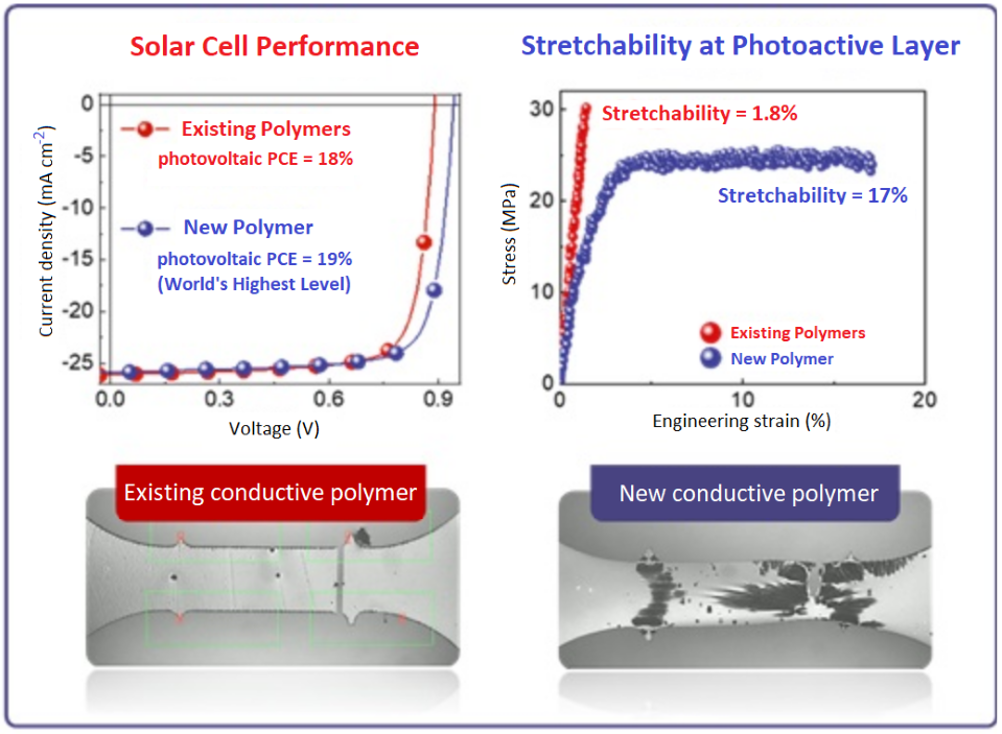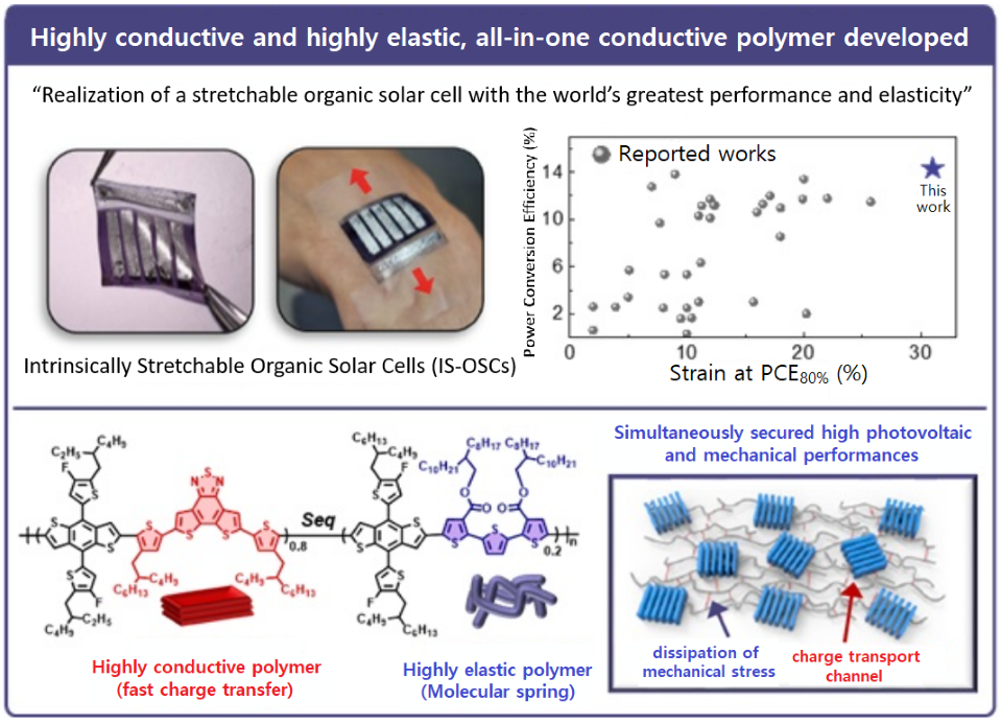Led by Professor Bumjoon Kim, the team from the Department of Chemical and Biomolecular Engineering (CBE) at KAIST (Korea Advanced Institute of Science & Technology) claim that their breakthrough material exhibits high electrical performance and elasticity while introducing the world’s highest-performing stretchable organic solar cell.
Compared to existing non-organic material-based solar cells, organic solar cells are lighter and flexible, making them highly applicable for wearable electrical devices. According to KAIST, solar cells as an energy source are particularly important for building electrical devices, but high-efficiency solar cells often lack flexibility, and their application in wearable devices has been limited until now.

The team conjugated a highly stretchable polymer to an electrically conductive polymer with excellent electrical properties through chemical bonding, and developed a new conductive polymer with electrical conductivity and mechanical stretchability.

This polymer is claimed to meet the highest reported level of photovoltaic conversion efficiency (19 per cent) using organic solar cells, while also showing 10 times the stretchability of existing devices. The team thereby built the world’s highest performing stretchable solar cell that can be stretched up to 40 per cent during operation, and demonstrated its applicability for wearable devices.
In a statement, Professor Kim said: “Through this research, we not only developed the world’s best performing stretchable organic solar cell, but it is also significant that we developed a new polymer that can be applicable as a base material for various electronic devices that needs to be malleable and/or elastic.”
This research, conducted by KAIST researchers Jin-Woo Lee and Heung-Goo Lee as first co-authors in cooperation with teams led by Professor Taek-Soo Kim from the Department of Mechanical Engineering and Professor Sheng Li from the Department of CBE, has been published in Joule.











IET sounds warning on AI doll trend
I agree that we need to reduce cooling water demand for servers. And yes, generative AI consumes a large amount. But what about BitCoins? Their...